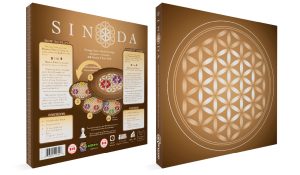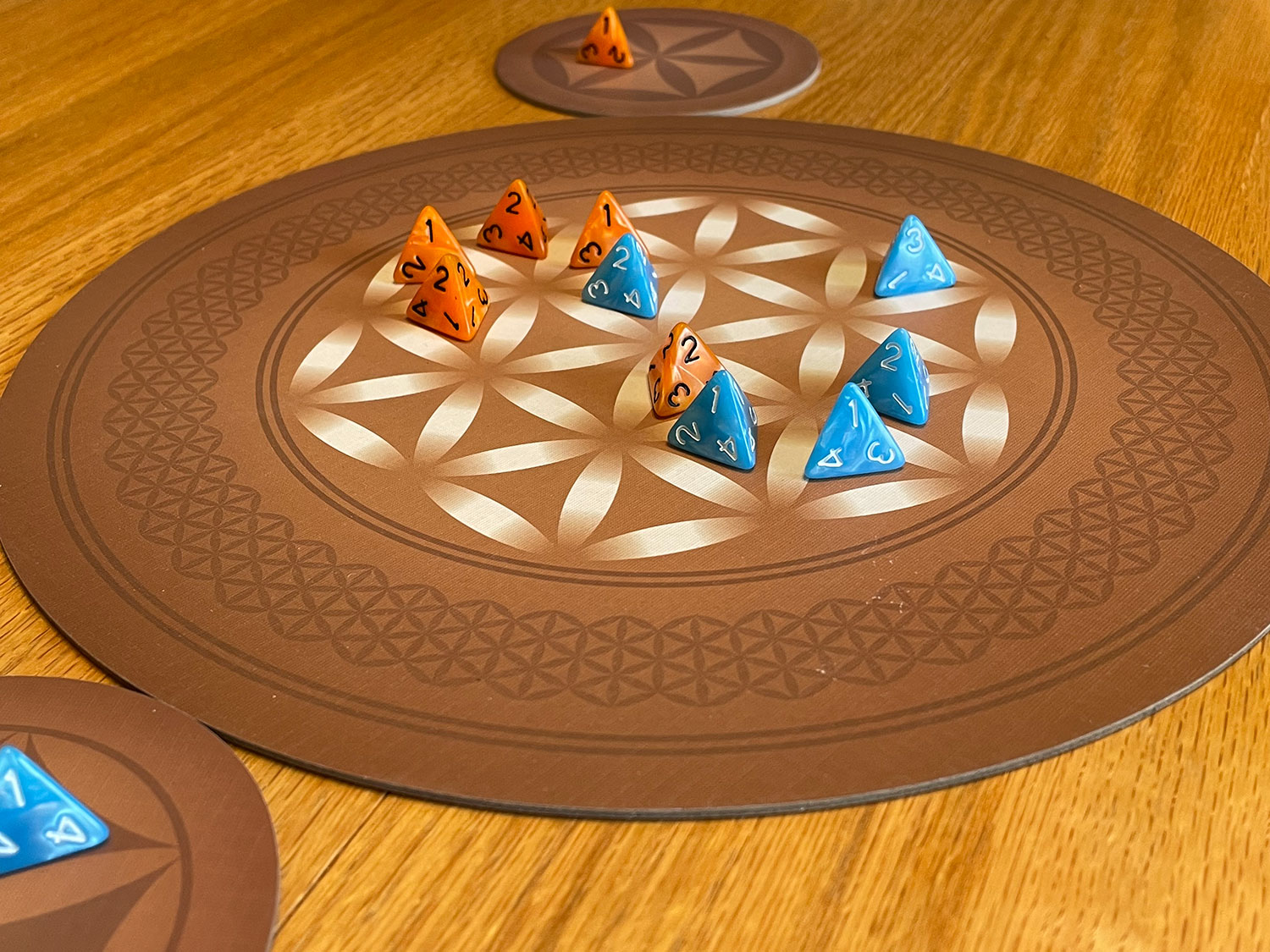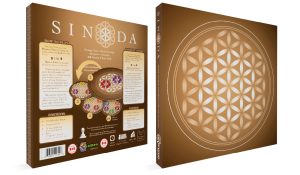 My first experience with 4-sided dice was of course Dungeon & Dragons. These dice always had the standing joke of being the caltrops of any gamer’s sets. It was probably because these dice were the most underused of most people’s sets. I’m sure most gamers only ever seemed to roll these when using spells like magic missile or when they rarely had to wield a dagger in combat. Maybe someday these dice will be a focal point in some game.
My first experience with 4-sided dice was of course Dungeon & Dragons. These dice always had the standing joke of being the caltrops of any gamer’s sets. It was probably because these dice were the most underused of most people’s sets. I’m sure most gamers only ever seemed to roll these when using spells like magic missile or when they rarely had to wield a dagger in combat. Maybe someday these dice will be a focal point in some game.
This brings us to today’s review, Sinoda from BSGames. This abstract strategy game uses 4-sided dice as the game pieces that players are trying to capture for points and the highest total wins. Sinoda is for 2-4 or 6 players (no 5 player rules) and plays in about 20-45 minutes.
Game Overview:
Sinoda setup is straightforward and fast. Choose your 4-sided die game piece color and use the setup diagram based on your player count or team count (team rules are also included). When placing your piece, you must be sure that the 1 is at the top of each die.
Play begins with the randomly determined first player. A player has two options to choose on their turn: change the number value by 1 higher or lower on their piece OR move a piece exactly the number of spaces equal to the value at the top of the die.

A note about movement: a piece can only move through the white lines on the player board, a piece cannot move through or jump over other pieces including their own, and pieces cannot move back to a space it occupied on the current turn.
If a piece moves onto a space occupied by an opponent’s piece, that player will capture that piece and remove it from the board, placing it on their Capture disc. The piece captured is also worth point(s) equal to the value at the top of the die.
The game will end immediately if the following occurs: all players only have 1 piece left on the board, 1 player has lost all their pieces, or a player has captured a total of 6 pieces.
The player with the most points of captured pieces wins. The game can also end, and a player can win by Sinoda as well. This means that player(s) cannot match or exceed another player in total points with the remaining pieces on the board.

Game Experience:
Sinoda has easy to learn rules, which makes this game fast to the table. The setup is super simple, and mechanics also make this game easy to master, like the movement, which only allowed through the white lines on the game board and fixed at the value at the top of the game piece. The only thing that might occasionally trip up players is remembering that there’s no backward movement and that you cannot go through any game pieces, including your own. Aside from these mechanics there’s really not much that new or seasoned gamers will not quickly master.
I’m going to be blunt; I really didn’t have high expectations for Sinoda after opening the box and reading the rules. But during my first play and subsequent, I must admit I was shocked how thinky and mathy this game can be. It definitely has a thinky chess-like feel to it because you will likely be sacrificing pieces to ideally optimize your movement and to possibly capture pieces so you’re thinking about your current and future moves as well as your opponents’ too. But it’s also very mathy because you don’t want to give your opponent(s) too many points and you can easily see how much you should or should not increase your piece values for victory.

The last and my favorite mechanics of the game were the end game rules. I loathe player elimination, but the Sinoda designers did a great job making it an end game mechanic so that no one is sitting out and watching which is not fun for anyone. The game can end multiple other ways mentioned above but these rules really keep the game from overstaying it’s welcome and allowing players to try multiple times instead of one long stale play.
Now, I did have some issues with Sinoda, but I will be honest these are pretty minor ones. First the game pieces are quality and look great, but these are smaller than your typical 18mm scale tetrahedrons. The numbers are still easy to read given the game piece colors, but they can be difficult to pick up at times, which can disrupt the game especially if you drop on other pieces. Also, the game board and capture discs are fairly drab. Maybe this was purposeful to make the game pieces stand out, but the over design is actually cool, but the color choice and shading seems to diminish it.
The last issue is that even though the game play can be quick at times, there will be moments of analysis by paralysis, especially at higher player counts, even in the team games too. These instances occur at different times, depending on player count, but I will say in the 6-player game it can happen from start to finish, those are more intense games. This will also tend to happen in any game as you get close to end game conditions, and especially in a close scoring game, the wrong move or number change could make or break that victory, so turns will move slower. Players need to be aware that there can be and likely will be some slowdown in the game play.
Final Thoughts:
Sinoda comes with straightforward rules that makes this game easy to master and fast to the table. But what’s most surprising is how thinky and mathy this game is which makes it a much deeper game than expected. The multiple end game mechanics are really what makes Sinoda stand out for me, and I not only love the variety, but these help this game not overstay it’s welcome and helps it get back to the table instead of the trade pile.
Now what’s holding back Sinoda from scoring higher is some production issues like smaller dice that can be difficult to pick up and includes a drab game board which hurts its design. Players also need to be aware that there will be moments of analysis of paralysis as players try to maximize their turn to help themselves instead of their opponent(s).
Final Score: 4 Stars – a great abstract strategy game that uses d4 dice that players are trying to capture and includes multiple end game options for victory.
 Hits:
Hits:
• Easy to learn and fast to the table
• Thinky and mathy
• End game rules
Misses:
• Game pieces small & board drab
• Some analysis by paralysis
Source: Board Game Quest





